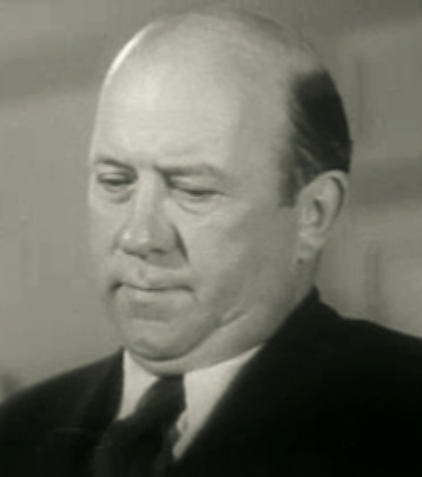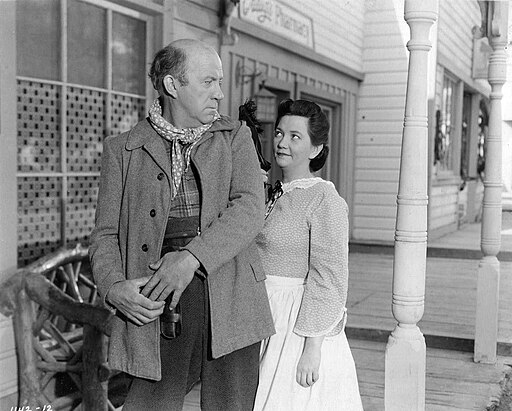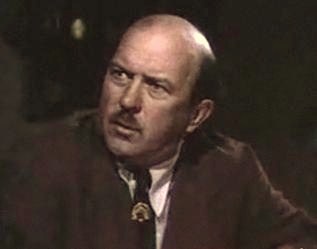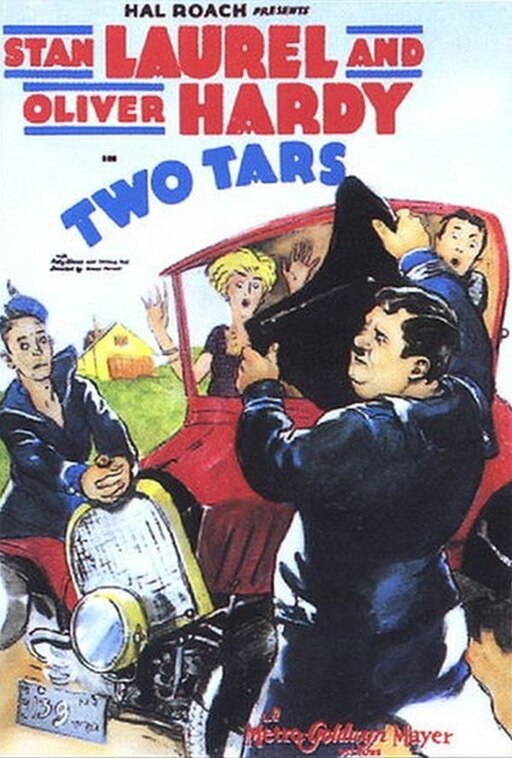Edgar Kennedy
back| Full Name | Edgar Livingston Kennedy |
| Stage Name | Edgar Kennedy |
| Born | April 26, 1890 |
| Birthplace | Monterey, California, USA |
| Died | November 9, 1948 |
| Buried | Cremated and his ahes scattered at sea |
| Married to | Madeline Hurlock (1927 - 1931) - Gwendolyn Harrison ( 1931 - 1948, his death) |
| Children | None, but stepfather Gwendolyn Harrison's children from her previous marriage |
| Notable films | Duck Soup (1933) - A Haunted House (1921) - Two Tars (1928) |
Edgar Kennedy
King of Slow Burn Comedy
Kennedy's career spanned both the silent and sound film eras, and he worked with many of the era's comedy greats, including Charlie Chaplin, Laurel and Hardy, and the Marx Brothers. His "slow burn" technique, where he would express growing frustration and anger in a comedic fashion, became his trademark and a widely recognized gesture in comedy.
Despite his numerous roles as a supporting actor and comedian, his impact on early cinematic comedy was significant, leaving a lasting legacy that influenced many comedians who followed.
Related
Edgar Kennedy (1890 – 1948)
Biography and Overview of his Movie Career
Edgar Livingston Kennedy, born on April 26, 1890, in Monterey, California, grew up in a time when the film industry was in its nascent stages. His journey from a small town to becoming a recognized figure in Hollywood is a tale of resilience, creativity, and the perpetual quest for laughter. Kennedy's early life in the picturesque landscapes of Monterey might not have hinted at his future stardom, but it was here that he nurtured the versatility and expressions that would later define his cinematic persona.
Before venturing into the world of cinema, Edgar sought various avenues, including boxing, where he earned the nickname "the Bull." However, his path veered dramatically towards entertainment, a field where his true talents lay. Transitioning from vaudeville and stage performances to silent films, Kennedy found his calling in the bustling Hollywood scene of the early 20th century. He became part of the ensemble cast of the Keystone Cops series, showcasing his knack for slapstick and physical comedy, which became a cornerstone of his career.
Edgar Kennedy's personal life was as eventful as his on-screen performances. He married twice, first to Madeline Hurlock, a comedienne and actress, in 1927. Their union brought Kennedy into the limelight of celebrity marriages but ended in divorce in 1931. He found love again with Gwendolyn Harrison, and their marriage lasted until his untimely death. Although Edgar had no children of his own, he embraced his role as a stepfather, showcasing the warmth and kindness that those close to him knew well.
Kennedy's journey to success was marked by his incredible ability to adapt and evolve with the changing dynamics of cinema. With the advent of sound in films, many silent era stars found it challenging to transition, but not Kennedy. His distinctive voice and timing only added to his comedic arsenal, making him a valuable asset in both silent and sound films. The "Average Man" series, where he portrayed a perpetually flustered everyman, became emblematic of his "slow burn" technique—a comedic style where frustration builds visibly on his face until it erupts in hilarious indignation or resignation. This became Kennedy's signature style, endearing him to audiences and securing his place in the annals of comedic greats.
Beyond the screen, Edgar Kennedy was a man of simple pleasures and passions. He loved fishing and often retreated to the tranquility of the water to unwind from the demands of his career. This love for the outdoors was a testament to his Californian roots, reflecting a life lived with an appreciation for the natural world amidst the artificiality of Hollywood.
On November 9, 1948, the world lost Edgar Kennedy. He died of throat cancer in Woodland Hills, Los Angeles, California, at the age of 58. The loss was felt deeply in the entertainment community and among audiences who had come to love his everyman charm and comedic brilliance. In death, as in life, Kennedy left behind a legacy of laughter and a body of work that continues to entertain generations. His ashes were scattered at sea, a final farewell to a man whose life journey took him from the shores of Monterey to the heights of Hollywood stardom. Edgar Kennedy's contribution to cinema, particularly comedic cinema, remains indelible, a testament to a talent that transcended the silent and sound eras of film.
Short Video Bio of Edgar Kennedy:
Memorable Movies featuring Edgar Kennedy:
Early Career Highlights (Silent Era)
- "The Knockout" (1914): A comedy short featuring Fatty Arbuckle and Charlie Chaplin in which Kennedy appears in a minor role. The story revolves around a boxing match that quickly descends into chaos.
- "A Movie Star" (1916): Kennedy plays a bit part in this Mack Sennett comedy about a movie star who causes a sensation in a small town.
Transition to Sound and Rise to Prominence
- "Duck Soup" (1933): In this Marx Brothers classic, Kennedy plays a street vendor who becomes the target of Harpo and Chico's antics, showcasing his ability to perform the "slow burn" to comedic effect.
- "The Dentist" (1932): A short comedy film where Kennedy plays a patient of W.C. Fields, the dentist, resulting in a series of hilarious and painful encounters.
The "Average Man" Series
Beginning in the mid-1930s, Kennedy starred in a series of short films for RKO Pictures that featured him as the "Average Man," dealing with everyday frustrations and situations. These shorts are where he perfected his "slow burn" technique.
- "It's Your Move" (1935): Edgar tries to move his family to a new house but faces a series of comedic mishaps.
- "Good Housewrecking" (1933): A short where Kennedy attempts home renovations with disastrously funny results.
Later Career
- "Two Tars" (1928): A Laurel and Hardy film where Kennedy plays a traffic cop dealing with the duo's chaotic driving antics.
- "North of the Rio Grande" (1937): Kennedy takes on a supporting role in this western, showcasing his versatility as an actor.
Final Films
- "My Favorite Brunette" (1947): One of his last appearances, in a film starring Bob Hope and Dorothy Lamour, Kennedy plays a detective in this comedy-mystery.
Analysis of his Acting Style:
Edgar Kennedy's acting style, particularly noted for what came to be affectionately known as the "slow burn," is a masterclass in comedic timing and physical expression. This technique became not just a hallmark of Kennedy's performances but also a significant contribution to the lexicon of comedic acting. His style was rooted in the physical comedy of the silent film era but evolved to incorporate the nuanced demands of sound films, showcasing his versatility and depth as an actor.
Physicality and the "Slow Burn"
Kennedy's "slow burn" was an exercise in controlled frustration. It began with a slight irritation, visible in a twitch of the eye or a tensing of the jaw, then gradually escalated into a full-fledged explosion of anger or exasperation, often without a single word being spoken. This crescendo of emotion was communicated through Kennedy's mastery over his facial expressions and body language, making him a study in the art of non-verbal communication. His ability to convey a wide range of emotions, from bewildered annoyance to simmering rage, using only his eyes, eyebrows, and the set of his mouth, spoke volumes of his skill as a comedic actor.
Timing and Reaction
Another critical aspect of Kennedy's acting style was his impeccable timing. Comedy often relies on the precise moment of reaction, and Kennedy was a maestro of comedic timing. Whether it was the delayed realization of a slapstick gag or the perfectly timed delivery of a line, he knew exactly when to let a moment of comedy breathe and when to punctuate it with his reaction. His interactions with other characters often highlighted this skill, as he played the straight man to their antics, allowing his slow burn to serve as the comedic counterpoint to their absurdity.
Versatility Across Genres
While Kennedy is best remembered for his comedic roles, his acting style also allowed him to venture into other genres. He could adapt his expressive physicality and timing to suit dramatic moments, albeit these were less frequent in his career. His versatility was a testament to the depth of his understanding of performance art; he could seamlessly transition from the broad physical comedy of the Keystone Cops to more subtle, character-driven humor.
Legacy and Influence
Edgar Kennedy's acting style, particularly the slow burn, left an indelible mark on comedy. His ability to elicit laughter through frustration and indignation, without resorting to over-the-top slapstick, showcased his unique contribution to the genre. Future generations of comedians and actors have borrowed from Kennedy's toolkit, using the slow burn and impeccable timing to enhance their comedic performances.
Kennedy's influence extends beyond his immediate era; he demonstrated that the power of comedy lies not just in the situation but in the reaction to it. By mastering the art of the slow burn, Edgar Kennedy carved out a niche in comedic history, one that celebrates the human capacity to find humor in irritation and annoyance. His legacy is one of laughter, timing, and an unparalleled ability to communicate a wide range of emotions without saying a word.
Awards and Recognition:
Edgar Kennedy, despite his significant contributions to the film industry, especially in the realm of comedy, did not receive awards and nominations in the manner actors do today. During Kennedy's prime years in the early to mid-20th century, the landscape of film awards was vastly different from the present day. The Academy Awards, for instance, were established in 1929, and in its early years, focused more on films, directors, and lead actors, with little recognition given to character actors or those predominantly featured in short films or comedic roles.
Kennedy's era did not yet celebrate the nuances of comedy and supporting roles with dedicated awards as seen in contemporary times. His mastery of the "slow burn" and his ability to elicit laughter through his physical comedy and impeccable timing made him a beloved figure in Hollywood and among audiences. However, this did not translate into formal recognition through awards or nominations within the industry's major award ceremonies.
List of movies with Edgar Kennedy:
Silent Film Era (Selection)
- The Knockout (1914)
- A Movie Star (1916)
- Fatty and Mabel Adrift (1916)
- The Bell Boy (1918)
- The Hayseed (1919)
- Moonshine (1918)
- The Garage (1920)
Transition to Sound and Prominent Roles
- The Dentist (1932)
- Duck Soup (1933)
- The Fatal Glass of Beer (1933)
- Tillie and Gus (1933)
- It's a Gift (1934)
"Average Man" Series (A Selection from the Series)
- It's Your Move (1935)
- Good Housewrecking (1933)
- Taming the Wild (1936)
- Baby Daze (1939)
- A Panic in the Parlor (1941)
Later Appearances and Supporting Roles
- Two Tars (1928) - Notable for its era and indicative of his work with Laurel and Hardy.
- North of the Rio Grande (1937)
- My Favorite Brunette (1947)




